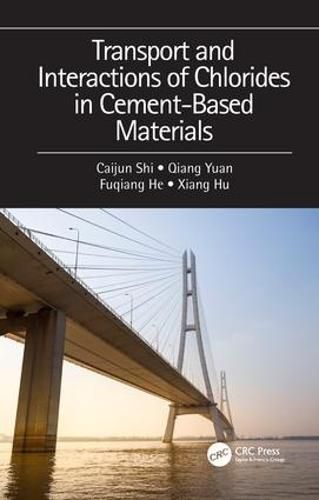Readings Newsletter
Become a Readings Member to make your shopping experience even easier.
Sign in or sign up for free!
You’re not far away from qualifying for FREE standard shipping within Australia
You’ve qualified for FREE standard shipping within Australia
The cart is loading…






Chloride-induced corrosion is the most important durability issue of reinforced concrete structures, and the prediction and prevention of chloride-induced corrosion has attracted considerable interest all over the world.
Given that chloride penetrates through the concrete cover, the issues concerning its transport are crucial. These include testing methods, prediction, and the prevention of ingress. During the transport process, physical and chemical interaction occurs between chloride and cement hydrates, which in turn affects the further transport, so the transport of chloride and these interactions are closely related and underpin our understanding of chloride-induced corrosion in RC structures.
This book provides in-depth discussion of chloride transport and its interaction in cement-based materials, and reviews and summarizes the state of the art. The mechanisms and testing methods for chloride transport, chemical interactions of chloride with cement hydrates, chloride binding isotherms, measurement of penetration depths, factors affecting chloride transport, and modeling of chloride transport are discussed in detail. This book serves as a reference for researchers or engineer, and a textbook for graduate students.
$9.00 standard shipping within Australia
FREE standard shipping within Australia for orders over $100.00
Express & International shipping calculated at checkout
Chloride-induced corrosion is the most important durability issue of reinforced concrete structures, and the prediction and prevention of chloride-induced corrosion has attracted considerable interest all over the world.
Given that chloride penetrates through the concrete cover, the issues concerning its transport are crucial. These include testing methods, prediction, and the prevention of ingress. During the transport process, physical and chemical interaction occurs between chloride and cement hydrates, which in turn affects the further transport, so the transport of chloride and these interactions are closely related and underpin our understanding of chloride-induced corrosion in RC structures.
This book provides in-depth discussion of chloride transport and its interaction in cement-based materials, and reviews and summarizes the state of the art. The mechanisms and testing methods for chloride transport, chemical interactions of chloride with cement hydrates, chloride binding isotherms, measurement of penetration depths, factors affecting chloride transport, and modeling of chloride transport are discussed in detail. This book serves as a reference for researchers or engineer, and a textbook for graduate students.